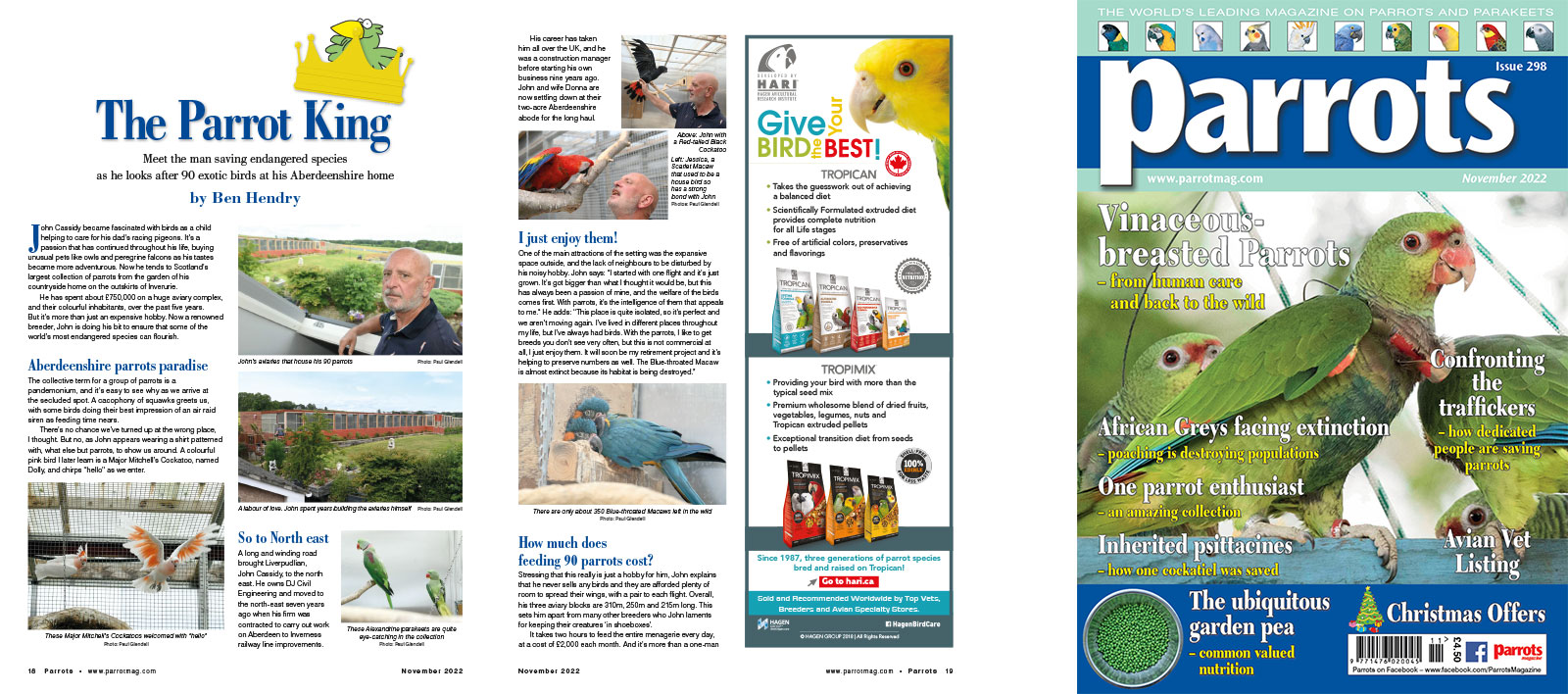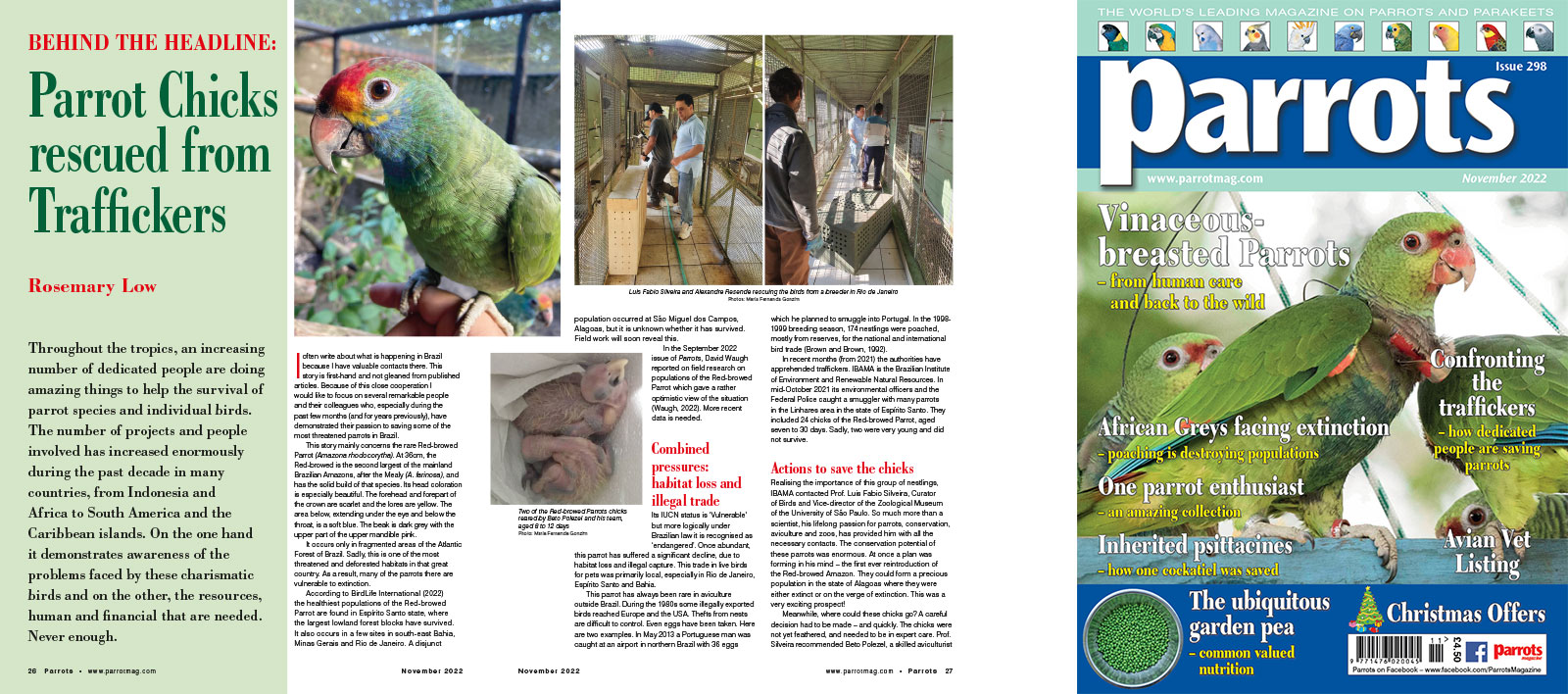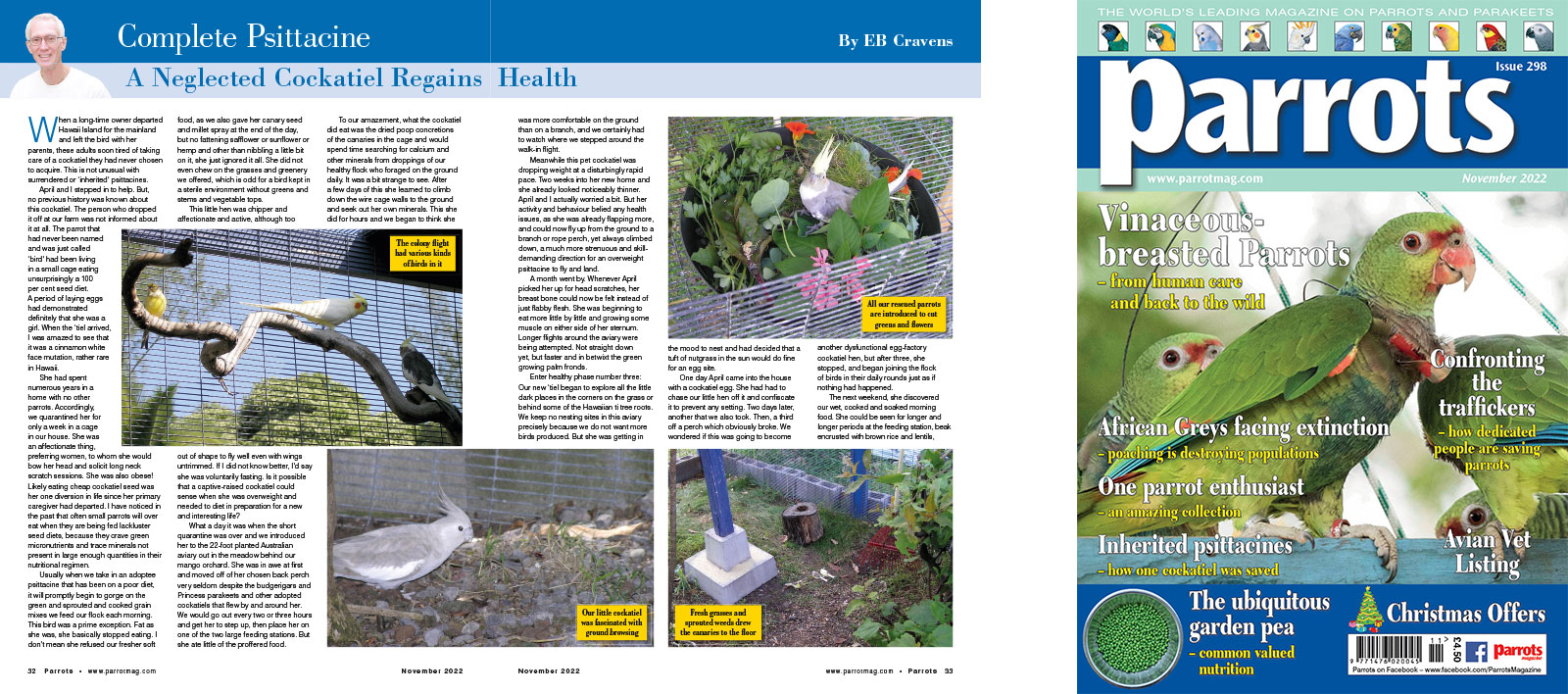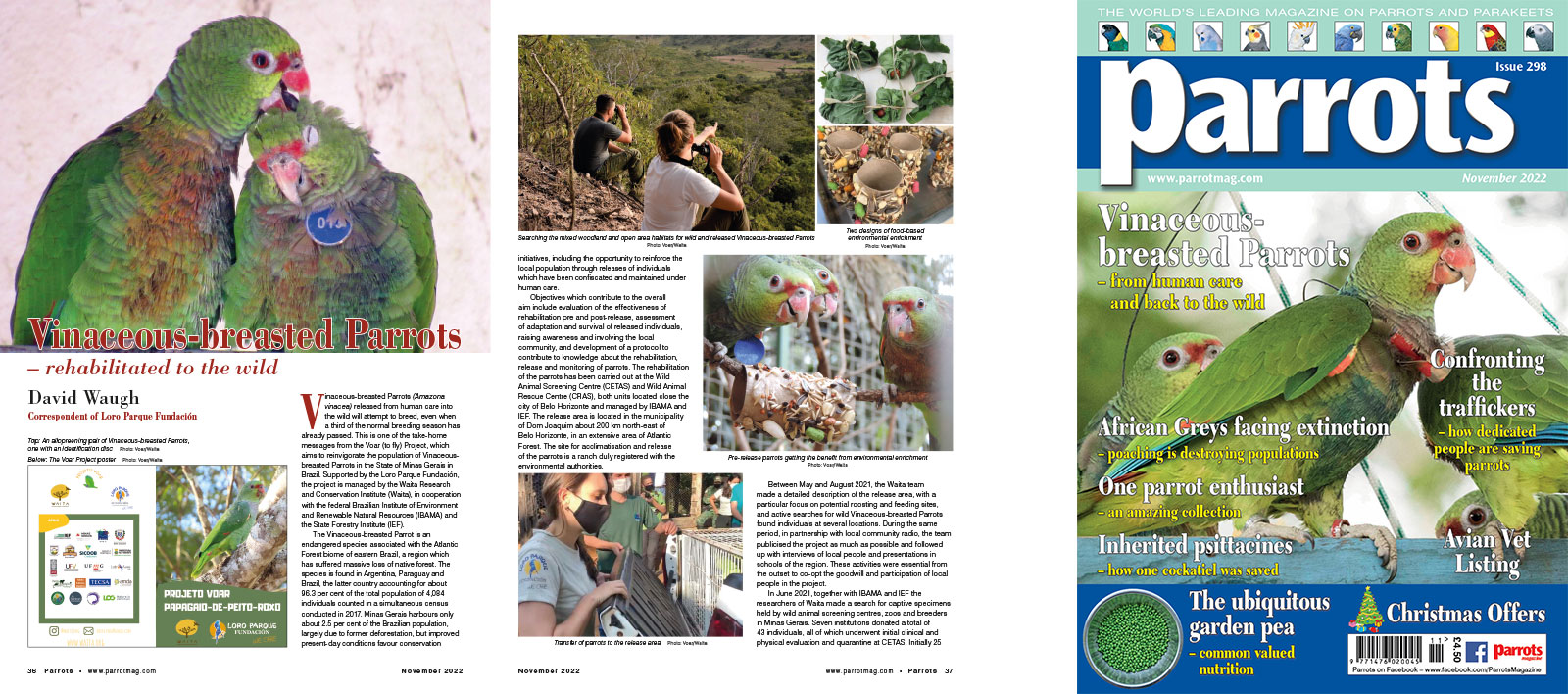
By Ben Hendry
John Cassidy became fascinated with birds as a child helping to care for his dad’s racing pigeons. It’s a passion that has continued throughout his life, buying unusual pets like owls and peregrine falcons as his tastes became more adventurous. Now he tends to Scotland’s largest collection of parrots from the garden of his countryside home on the outskirts of Inverurie.
He has spent about £750,000 on a huge aviary complex, and their colourful inhabitants, over the past five years. But it’s more than just an expensive hobby. Now a renowned breeder, John is doing his bit to ensure that some of the world’s most endangered species can flourish.
The collective term for a group of parrots is a pandemonium, and it’s easy to see why as we arrive at the secluded spot. A cacophony of squawks greets us, with some birds doing their best impression of an air raid siren as feeding time nears.
Buy Now!

By Rosemary Low
Throughout the tropics, an increasing number of dedicated people are doing amazing things to help the survival of parrot species and individual birds. The number of projects and people involved has increased enormously during the past decade in many countries, from Indonesia and Africa to South America and the Caribbean islands. On the one hand it demonstrates awareness of the problems faced by these charismatic birds and on the other, the resources, human and financial that are needed. Never enough.
I often write about what is happening in Brazil because I have valuable contacts there. This story is first-hand and not gleaned from published articles. Because of this close cooperation I would like to focus on several remarkable people and their colleagues who, especially during the past few months (and for years previously), have demonstrated their passion to saving some of the most threatened parrots in Brazil.
This story mainly concerns the rare Red-browed Parrot (Amazona rhodocorytha). At 36cm, the Red-browed is the second largest of the mainland Brazilian Amazons, after the Mealy (A. farinosa), and has the solid build of that species. Its head coloration is especially beautiful. The forehead and forepart of the crown are scarlet and the lores are yellow. The area below, extending under the eye and below the throat, is a soft blue. The beak is dark grey with the upper part of the upper mandible pink.
Buy Now!

Complete Psittacine by Eb Cravens
When a long-time owner departed Hawaii Island for the mainland and left the bird with her parents, these adults soon tired of taking care of a cockatiel they had never chosen to acquire. This is not unusual with surrendered or ‘inherited’ psittacines.
April and I stepped in to help. But, no previous history was known about this cockatiel. The person who dropped it off at our farm was not informed about it at all. The parrot that had never been named and was just called ‘bird’ had been living in a small cage eating unsurprisingly a 100 per cent seed diet.
A period of laying eggs had demonstrated definitely that she was a girl. When the ‘tiel arrived, I was amazed to see that it was a cinnamon white face mutation, rather rare in Hawaii.
She had spent numerous years in a home with no other parrots. Accordingly, we quarantined her for only a week in a cage in our house. She was an affectionate thing, preferring women, to whom she would bow her head and solicit long neck scratch sessions. She was also obese! Likely eating cheap cockatiel seed was her one diversion in life since her primary caregiver had departed. I have noticed in the past that often small parrots will over eat when they are being fed lackluster seed diets, because they crave green micronutrients and trace minerals not present in large enough quantities in their nutritional regimen.
Buy Now!

David Waugh, Correspondent of Loro Parque Fundación
Vinaceous-breasted Parrots (Amazona vinacea) released from human care into the wild will attempt to breed, even when a third of the normal breeding season has already passed. This is one of the take-home messages from the Voar (to fly) Project, which aims to reinvigorate the population of Vinaceous-breasted Parrots in the State of Minas Gerais in Brazil. Supported by the Loro Parque Fundación, the project is managed by the Waita Research and Conservation Institute (Waita), in cooperation with the federal Brazilian Institute of Environment and Renewable Natural Resources (IBAMA) and the State Forestry Institute (IEF).
The Vinaceous-breasted Parrot is an endangered species associated with the Atlantic Forest biome of eastern Brazil, a region which has suffered massive loss of native forest. The species is found in Argentina, Paraguay and Brazil, the latter country accounting for about 96.3 per cent of the total population of 4,084 individuals counted in a simultaneous census conducted in 2017. Minas Gerais harbours only about 2.5 per cent of the Brazilian population, largely due to former deforestation, but improved present-day conditions favour conservation initiatives, including the opportunity to reinforce the local population through releases of individuals which have been confiscated and maintained under human care.
Objectives which contribute to the overall aim include evaluation of the effectiveness of rehabilitation pre and post-release, assessment of adaptation and survival of released individuals, raising awareness and involving the local community, and development of a protocol to contribute to knowledge about the rehabilitation, release and monitoring of parrots. The rehabilitation of the parrots has been carried out at the Wild Animal Screening Centre (CETAS) and Wild Animal Rescue Centre (CRAS), both units located close the city of Belo Horizonte and managed by IBAMA and IEF. The release area is located in the municipality of Dom Joaquim about 200 km north-east of Belo Horizonte, in an extensive area of Atlantic Forest. The site for acclimatisation and release of the parrots is a ranch duly registered with the environmental authorities.
Buy Now!




